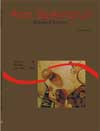<b>Quality control techniques used in the breeding of Nile tilapia (<em>Oreochromis niloticus</em>)</b> - DOI: 10.4025/actascibiolsci.v20i0.4471
Abstract
Two hundred and forty Nile tilapia fry (Oreochromis niloticus), 45 days old, sexually reverted, with initial average weight of 1.25 ± 0.14g, distributed in a totally randomized design during 180 days, were used in this experiment. Effects of substitutions of 10%, 20% and 30% of the rations by yeast obtained from alcohol distillery were evaluated. Average results obtained for the limnological parameters in water quality control by means of chemical analyses and control graphs were considered normal during the entire experimental period. Values of monthly average temperature were statistically out of control and by the application of the capacity rates (Cp and Cpk) showed that 35.20% were below the lowest specification limit (LSL). By means of Pareto’s techniques and knapsack problem used, results presented the best solution for problems of predators, biometry and diseases with the maximized function Z* objective. Quality control techniques have made possible an increase of stocking rate in the tanks without a reduction of the individual growth rate and with high productions of good quality fish.Downloads
Download data is not yet available.
Published
2008-07-21
How to Cite
Medri, V., Pereira, G. V., & Leonhardt, J. H. (2008). <b>Quality control techniques used in the breeding of Nile tilapia (<em>Oreochromis niloticus</em>)</b> - DOI: 10.4025/actascibiolsci.v20i0.4471. Acta Scientiarum. Biological Sciences, 20, 185-190. https://doi.org/10.4025/actascibiolsci.v20i0.4471
Issue
Section
Biology Sciences
DECLARATION OF ORIGINALITY AND COPYRIGHTS
I Declare that current article is original and has not been submitted for publication, in part or in whole, to any other national or international journal.
The copyrights belong exclusively to the authors. Published content is licensed under Creative Commons Attribution 4.0 (CC BY 4.0) guidelines, which allows sharing (copy and distribution of the material in any medium or format) and adaptation (remix, transform, and build upon the material) for any purpose, even commercially, under the terms of attribution.
Read this link for further information on how to use CC BY 4.0 properly.
0.6
2019CiteScore
31st percentile
Powered by 

0.6
2019CiteScore
31st percentile
Powered by 











1.png)




3.png)













